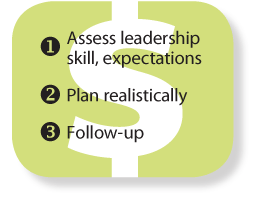Sometimes it takes only one meeting to begin a transformation
Posted on 09. Dec, 2010 by Janet Novinger in Case Studies
Clients often hesitate to hire a consultant.
They imagine months of work and unanticipated costs. Yet, sometimes one meeting, a facilitated conversation, can help a group by:
- Identifying behaviors that are getting in the way
- Discussing ways they can behave more effectively
- Coming up with a plan to hold themselves accountable
Brief interventions are most successful when the leader is strong, competent, confident and able to set the tone for the group.
A couple of years ago, I worked with a team in a hospital’s administrative division that wasn’t getting along. The main conflict was between two employees, but everyone had gotten involved. People had:
- Picked sides
- Discussed the problem in small groups
- Let the conflict hang over all of their interactions
Here’s how I approached this situation and others that call for a one-time response.
Step 1: Assess the manager’s ability to lead the group and set expectations for a calm, respectful work climate
When I first talked with Bridget, she described the conflict within her team and told me she had a very small budget for our work. Because the team was behind on a pivotal project and feeling a great deal of stress, they also had little time to work on team dynamics.
I had worked with Bridget before, when she led a different team, and knew that she was calm, confident and extremely skilled. I knew that she would be able to carry through on any plans we made and hold her employees accountable for their behavior.
Step 2: Plan and execute a realistic response
Given the small budget and substantial problem, Bridget and I decided that I would design and present a training on Respectful Communication, allowing time for her employees to discuss the challenges they faced.
The work I do under the umbrella of Respectful Communication is very flexible. Depending on a group’s need, I’ve presented this as a brown bag, helped groups address problems with gossip, and led full-day retreats on the topic.
During this three-hour session, I led the group in a discussion of what behaviors and words show respect and shared about a half-hour of information about effective communication. We spent the rest of the time talking about the current challenges they were facing.
During that discussion, the two employees who had the conflict spontaneously described their differences and their desire to resolve them. The manager and I hadn’t planned this, but allowed the discussion to unfold. Supported by the group’s empathetic listening, the discussion of respect and some careful questions from the manager and me, the two team members were able to:
- Resolve some of their long-standing issues
- Agree on a plan to discuss future issues
- With the rest of the team develop standards of behavior they all agreed to follow
Step 3: Follow-up to see what is working and what still needs to be addressed
Two months later, Bridget told me that:
- While the two people with the conflict continued to struggle, they no longer pulled the rest of the team into their problems
- The entire team was communicating more effectively
- She was feeling comfortable describing behaviors that were effective and behaviors that needed to change
- The team was starting to enjoy each other and the conversations that were helping them work together with more ease and respect
Often times a facilitated conversation can help a team move through their problems and can be very easy on a tight budget ♥

